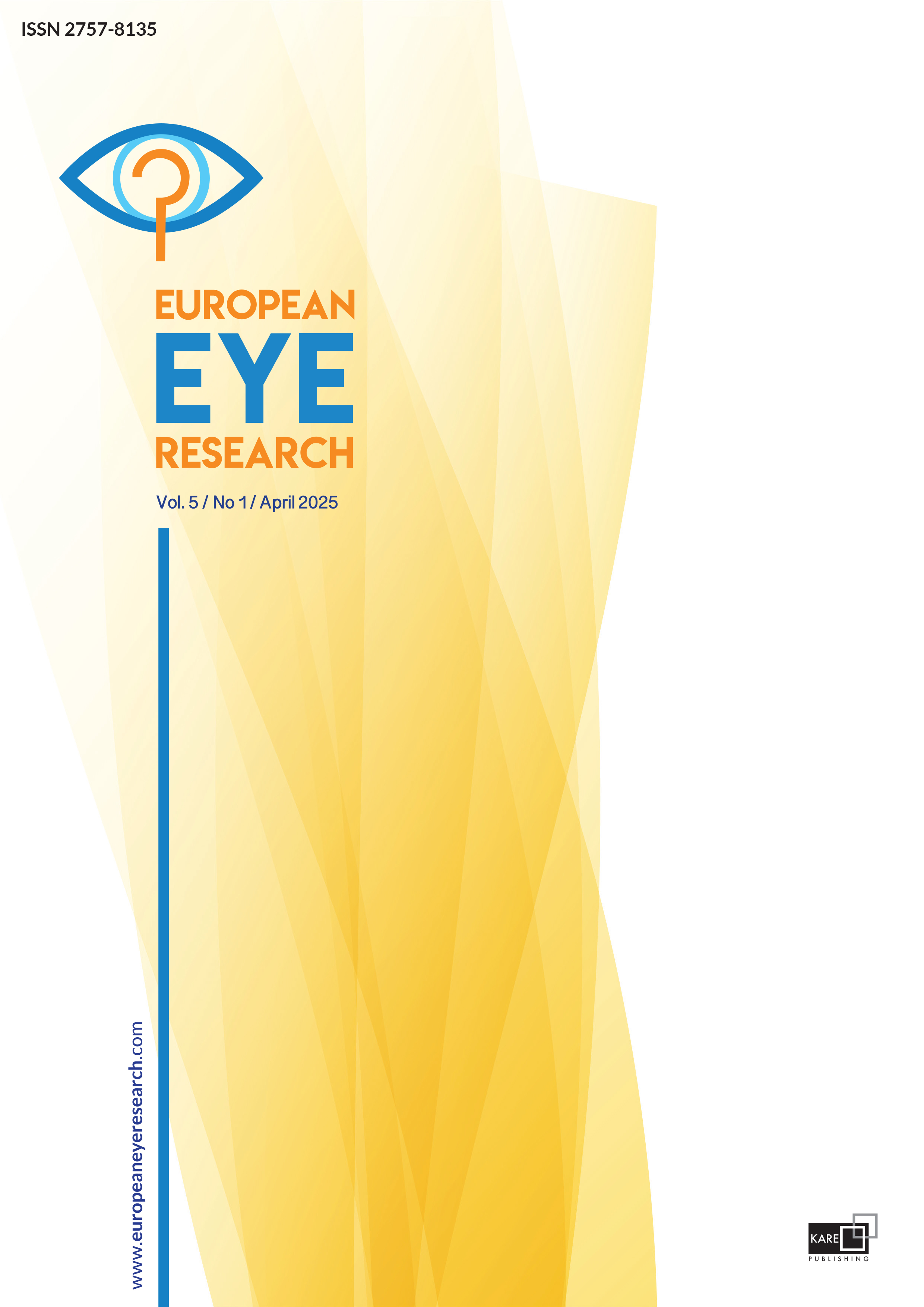

Quantitative assessment of the parafoveal vessel density and ganglion cell inner plexiform layer thickness in non-proliferative macular telangiectasia type 2
Aylin Karalezli1, Cansu Kaya1, Sema Kaderli2, Ahmet Kaderli1, Sabahattin Sul11Department of Ophthalmology, Mugla Sitki Kocman University, Mugla, Türkiye2Department of Ophthalmology, Mugla Training and Research Hospital, Mugla, Türkiye
PURPOSE: The study aimed to evaluate the vessel densities (VDs) and ganglion cell inner plexiform layer (GCIPL) thicknesses in macular telangiectasia (MacTel) Type 2.
METHODS: Thirty-six eyes with MacTel Type 2 and 30 controls were included in this prospective study. Based on the presence of ellipsoid zone (EZ) disruption two groups were formed: Group 1, MacTel eyes with intact EZ. Group 2; with EZ disruption.
RESULTS: In all MacTel eyes, a decrease was obtained in VDs and temporal parafoveal thickness in 1st year. (For group 1 p=0.006, p=0.045. For group 2 p=0.002, p=0.02) The average and minimum GCIPL also decreased in Group 2. (For average p=0.005, for minimum p=0.003) The mean VD, temporal and nasal thicknesses, average minimum GCIPL, and retinal nerve fiber layer were lower in Group 2 in the final visit.
CONCLUSION: VDs and GCIPL thickness may be useful parameters in the follow-up of MacTel Type 2 disease in which microvascular changes are observed in parallel with neurodegeneration.
Manuscript Language: English



